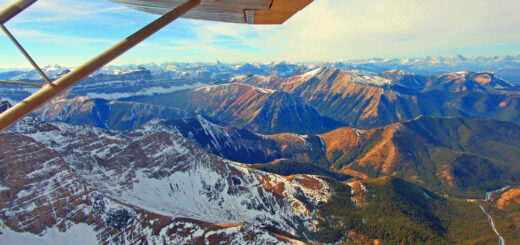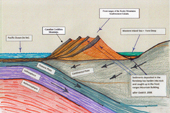Flight over the Rocky Mountains Part 4.
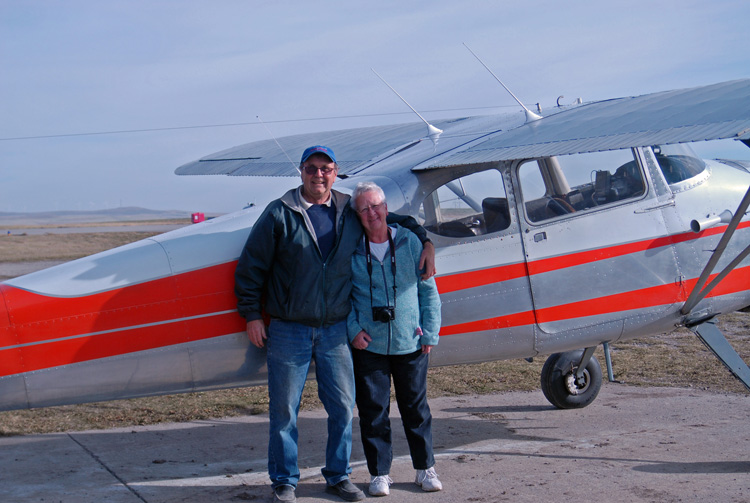
We came to realize that our view of this Rocky Mountain Creek and its catchment area was somewhat limiting from the ground. Through a good friend of ours Wendy Ryan, we were introduced to Jim Cameron who was a dedicated pilot of his 1948 Cessna 170 plane, who flew Kathleen and me the entire length of Rocky Mountain Creek and back again. The sight of the Rocky Mountains extending to three horizons from the air was a sight never to be forgotten, plus the data and photos that would not have been possible from the ground.
This was a wonderful opportunity, and our book was greatly enhanced by his offer. Excited, we both presented ourselves at his hanger armed with four cameras between us. Shortly after lift-off, we were amazed by the extensive ‘snaking’ of the creek in both the past and present. Many ancient dry oxbows could be seen stretching widely across the valley floor. And some of the recent arching bends had formed a complete circle, strange indeed. Heading towards the mountains we left the cultivated Prairies and flew over the rangelands mainly used for grazing cattle.

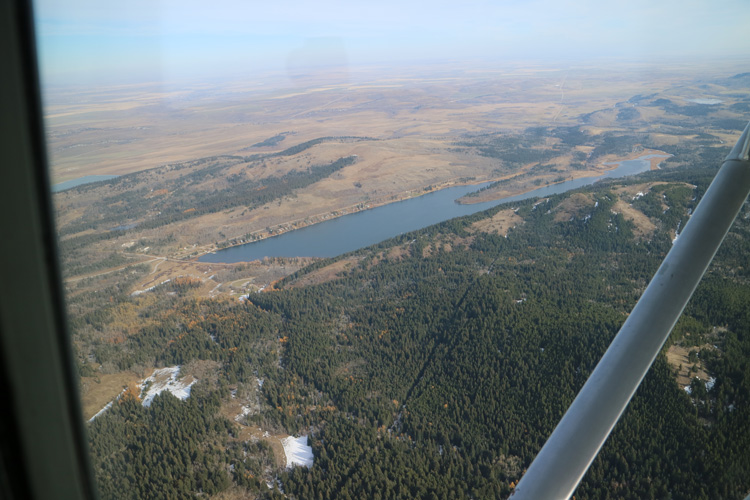
As we flew towards the mountains, cultivated fields merged into grazing pasture beneath us. Then, below us the foothills appeared, first the golden yellow of the aspen trees of the lower foothills, then the dark green of the conifers, of the upper foothills. Beauvais Lake is a unique feature, as it appears to sit between the two types of foothill regions. It is fed in part by the Beaver Creek draining the foothills above. Yet most of its water supply comes from the groundwater. On a late Autumn Day, one can often see ‘steam’ rising from the south bank, just one sight where groundwater is entering the lake.
The Montane is a refuse for the altitude migration of many life-form that occupy the higher regions. Such as Elk, White-Tail Deer, and Moose. It has a mixed woodland of deciduous and conifer trees but often the conifer prevails. Deciduous trees such as Aspen are often used as food by the large deer species. Cutting into the bark in great chunks is a major food supply in deep snow conditions.
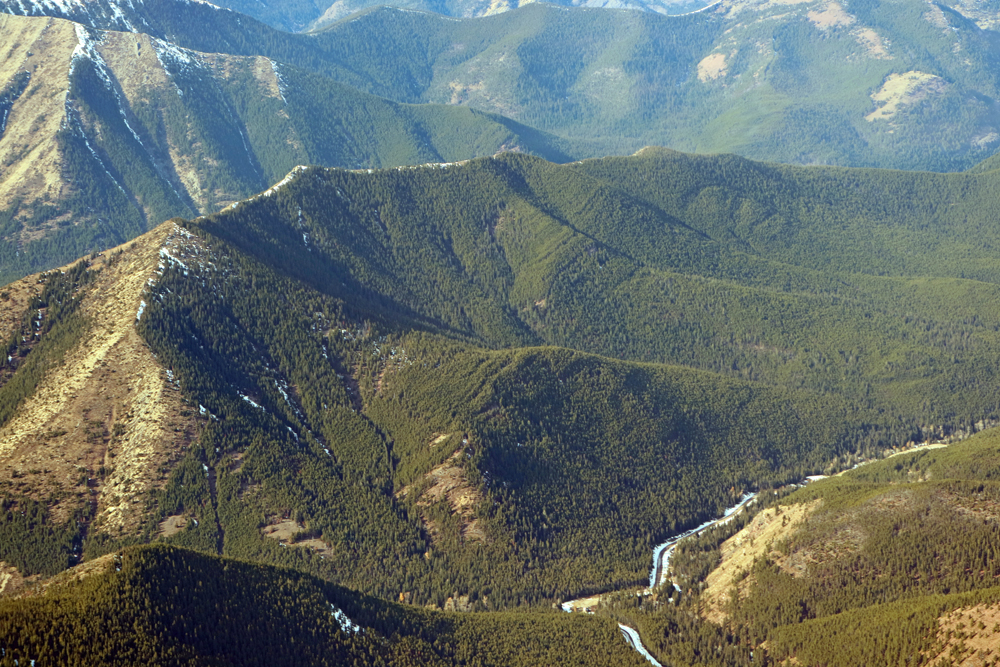
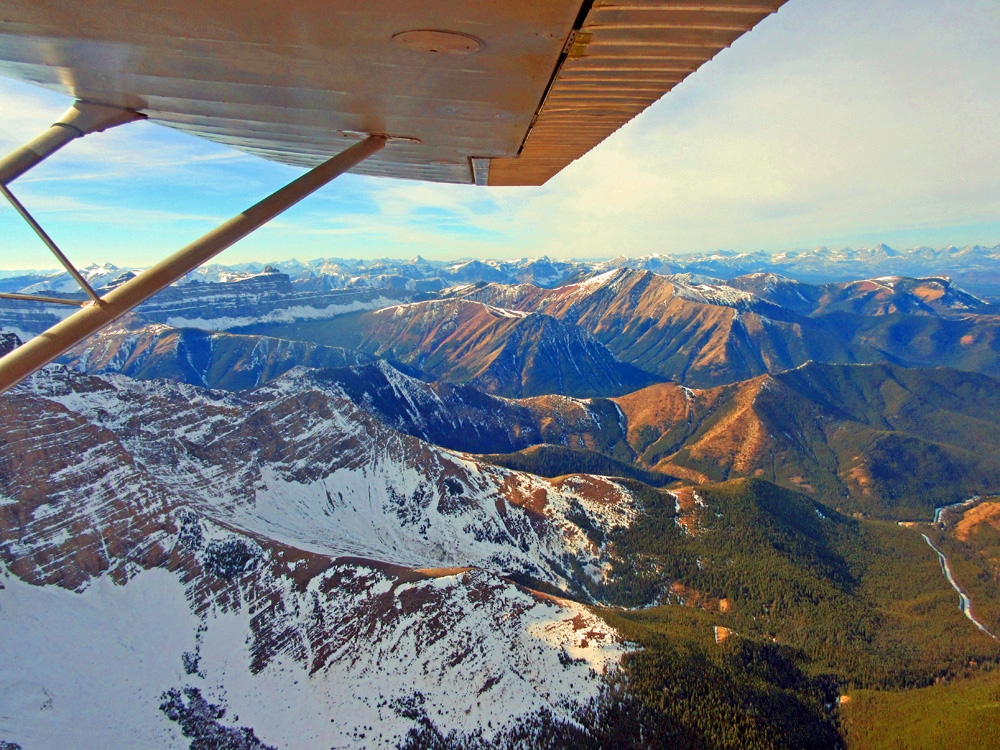
Jim lifted his plane to a higher level so that we might get a grand view of the Rocky Mountains. O-boy what a sight, mountains extended to the far horizon. Ben Gadd in his book suggests that in this area of the rocky Mountains’ front ranges extend for some 85 km towards the Pacific Ocean, with no main ranges in between.
The front ranges run the intire lenght of the rocky mountains and here with the Canadian section they arise like a mastive wall.
Directly below us was the wonderful landscape of colorful ridges and peaks that make this area so beautiful. These rocks were muds carried into an inland sea which became hardened into Argillite rocks rich in iron. the iron content gives the rocks their rich colors of red, yellow, and green.
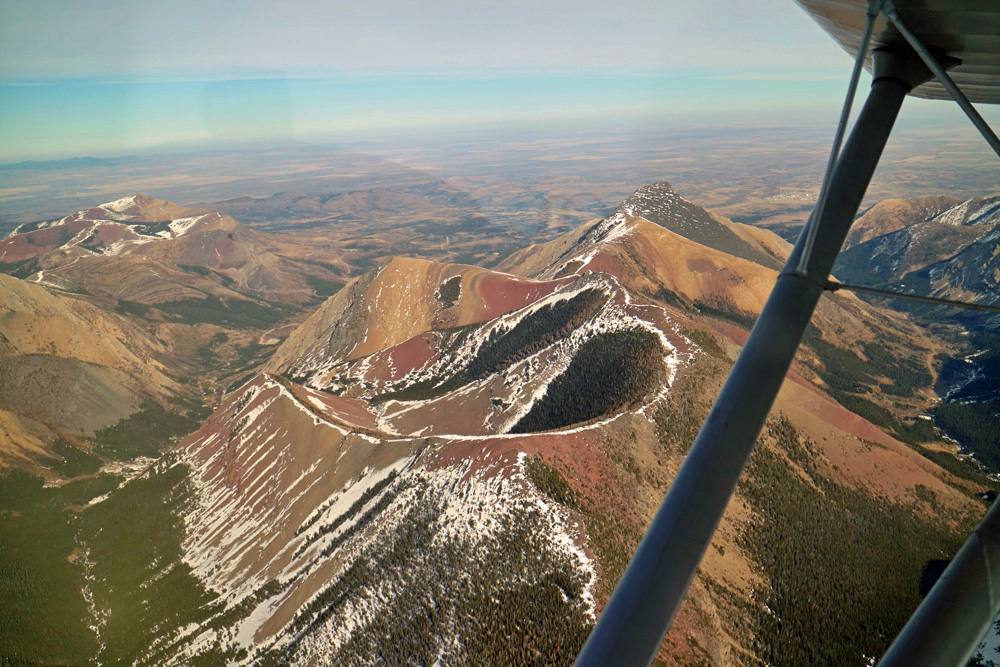

After giving us a birds-eye view of the mountains Jim turned his craft around and we headed back towards the prairies. Leaving the Eastern slopes of the Rockies behind we once again crossed the foothills and then out above the grasslands of the prairies. Looking down I could not help marveling at the creeks meandering as they carved their way through the deep clay deposits. We could also appreciate the many coulees that drained the landscape of surface water. Our next destination was the main river system which in this study takes in the Oldman River and the Castle River. The Castle River is a gem and a place where Kathleen and I love to hike and camp. The Oldman River and its tributers carve out the main watershed in this region and it has a braided system of channels some created as storm channels before the Dam was built.
You will also note the deep layers of clay deposited by the last glacial period. Unfortunately, the Oldman River was dammed creating a large reservoir. This has not helped as a study area of a natural river system, but it is where our creek merges with the main river.
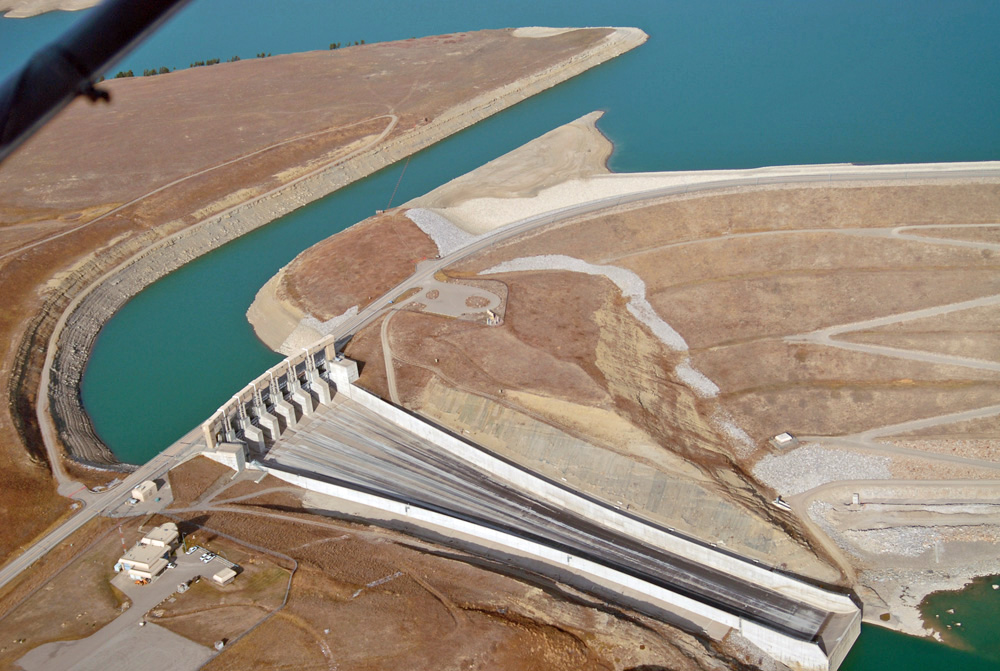
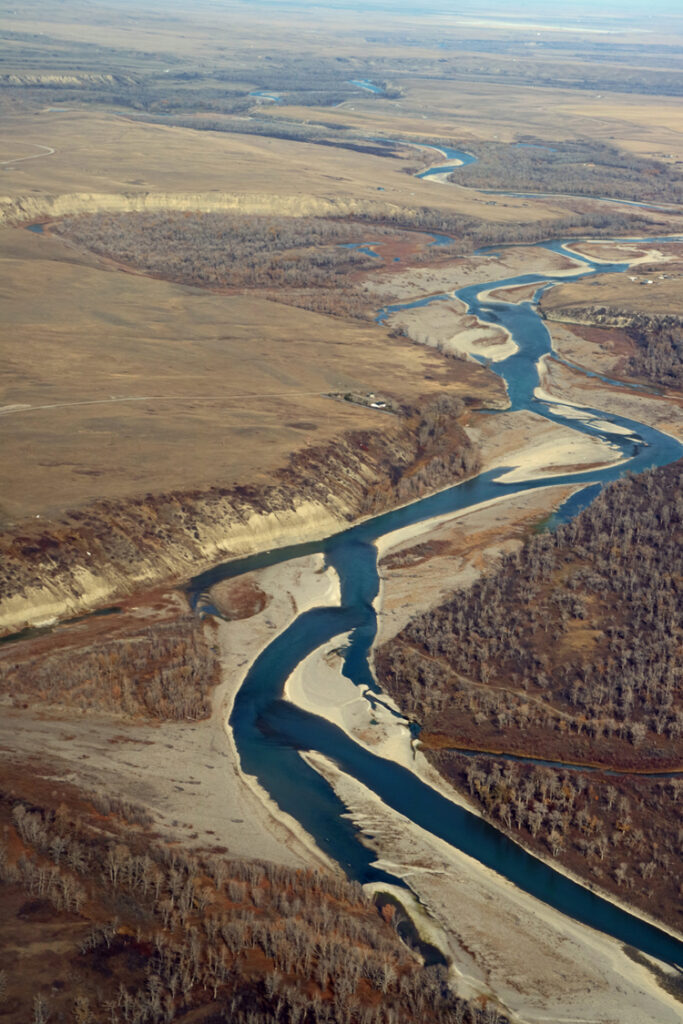
Having returned home with all photos from the air, it took many hours cataloging them for research and preparing some for the book. Thank you Jim we will forever be thankful for this spectacular view of the Rocky Mountains the Creek and its Watersheds.
You may like to visit our information in Part 5. Larger Mammals of the Rocky Mountains.
